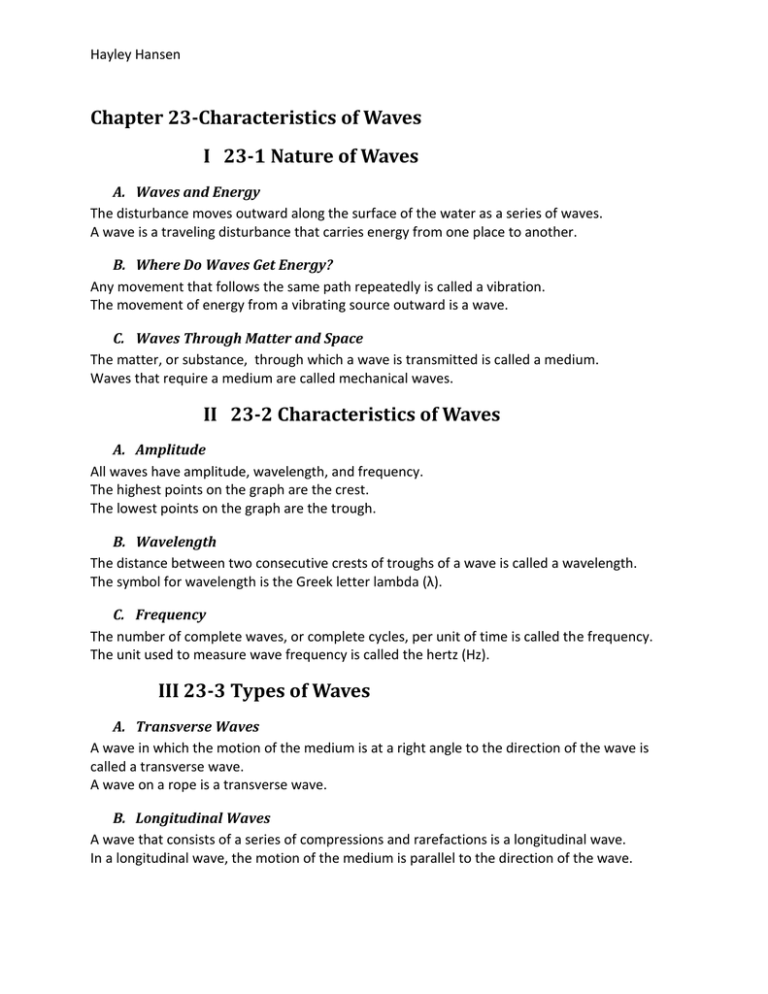I 23-1 Nature of Waves
advertisement

Hayley Hansen Chapter 23-Characteristics of Waves I 23-1 Nature of Waves A. Waves and Energy The disturbance moves outward along the surface of the water as a series of waves. A wave is a traveling disturbance that carries energy from one place to another. B. Where Do Waves Get Energy? Any movement that follows the same path repeatedly is called a vibration. The movement of energy from a vibrating source outward is a wave. C. Waves Through Matter and Space The matter, or substance, through which a wave is transmitted is called a medium. Waves that require a medium are called mechanical waves. II 23-2 Characteristics of Waves A. Amplitude All waves have amplitude, wavelength, and frequency. The highest points on the graph are the crest. The lowest points on the graph are the trough. B. Wavelength The distance between two consecutive crests of troughs of a wave is called a wavelength. The symbol for wavelength is the Greek letter lambda (λ). C. Frequency The number of complete waves, or complete cycles, per unit of time is called the frequency. The unit used to measure wave frequency is called the hertz (Hz). III 23-3 Types of Waves A. Transverse Waves A wave in which the motion of the medium is at a right angle to the direction of the wave is called a transverse wave. A wave on a rope is a transverse wave. B. Longitudinal Waves A wave that consists of a series of compressions and rarefactions is a longitudinal wave. In a longitudinal wave, the motion of the medium is parallel to the direction of the wave. Hayley Hansen C. Combinations of Waves A surface wave occurs on the surface between two different mediums. The motion of each particle is neither up and down nor back and forth. IV 23-4 Speed of Waves Speed = Frequency x Speed In a given medium, the speed of a wave is constant. The speed of a wave does not depend on the source or the speed of the source. IV 23-5 Interactions of Waves A. Reflection The bouncing back of waves upon reaching another surface is called reflection. The law of reflection states that the angle of incidence is equal to the angle of reflection. B. Refraction The bending of waves due to a change in speed is called refraction. Waves do not bend as they travel through a medium unless an obstacle gets in the way. C. Diffraction The bending of waves around the edge of an obstacle is called diffraction. The amount of diffraction depends on the wavelength and the size of the obstacle. D. Interference When two or more waves arrive at the same place at the same time, they interact in a process called interference. There are two kinds of interference: Constructive and Destructive. E. Standing Waves A wave that does not appear to be traveling along the rope is called a standing wave. An object that is vibrating at its natural frequency can cause a nearby object to start vibrating if that object has the same natural frequency.




